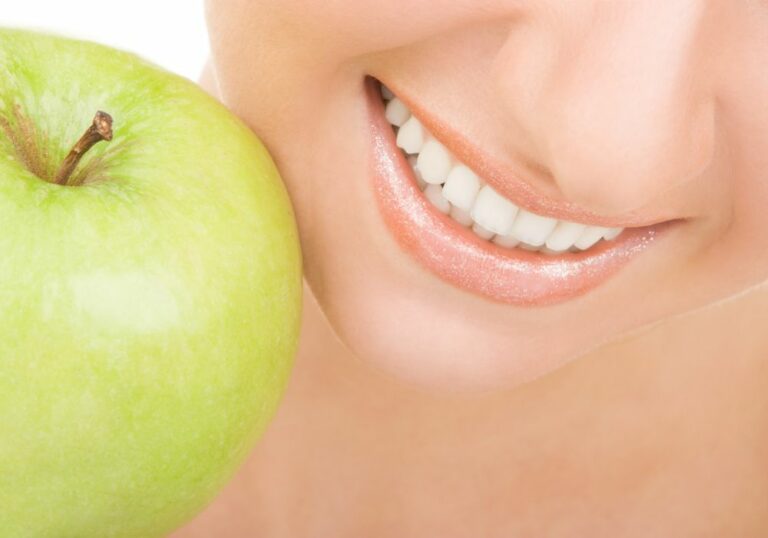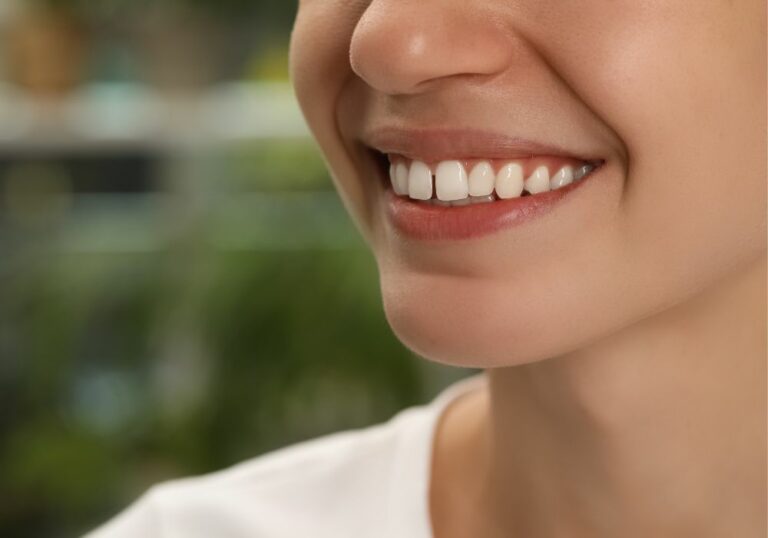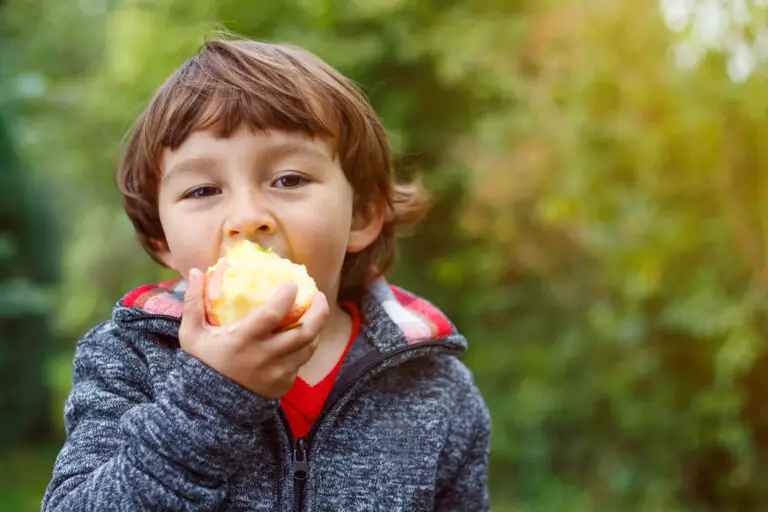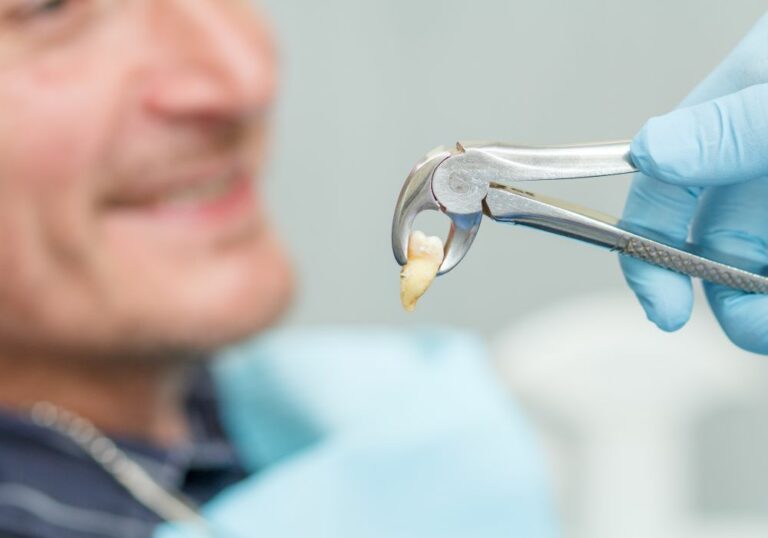What are canine teeth and why are they important?
The canine teeth, also known as cuspids, eye teeth, or fangs, are located laterally (sideways) from the incisors. Humans normally have four canines, two in the upper jaw and two in the lower. Canine teeth are essential for tearing and grabbing food, as well as guarding the mouth. Their roots anchor them firmly in the jawbone, and their sharp, pointed cusps can pierce and hold prey.
In humans, the upper canines are larger and more pointed than the lower ones. They are also the longest teeth in the mouth. The upper canines usually erupt around age 11-12 and the lower canines around age 9-10. This coincides with the preteen growth spurt.
Why won’t a canine tooth descend properly?
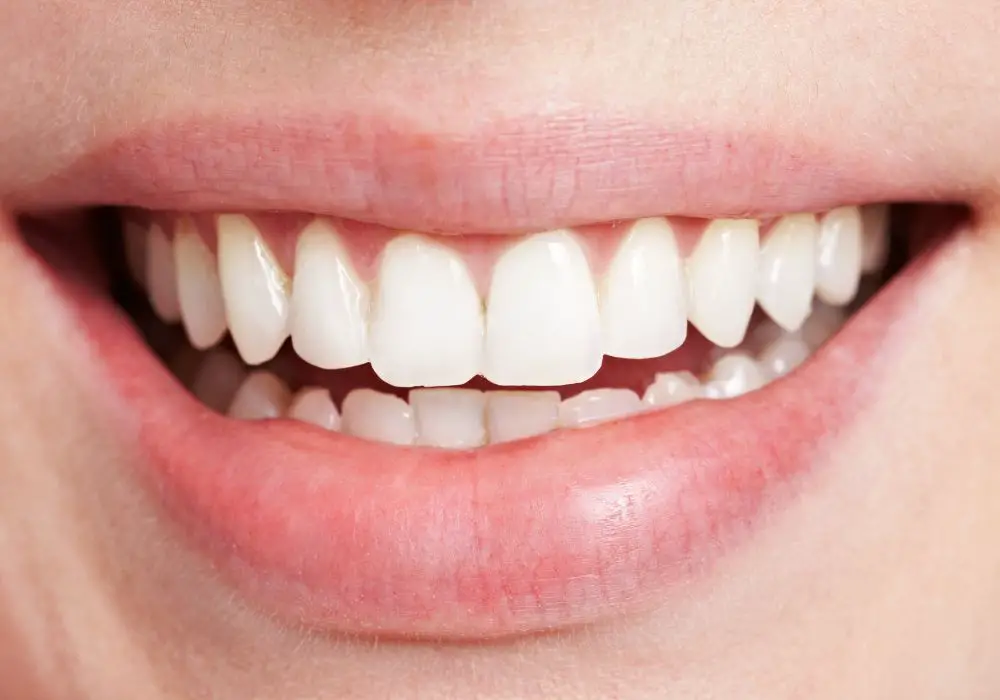
There are several reasons why a canine tooth may become impacted or fail to erupt:
Physical obstruction
A physical barrier blocks the tooth from moving down into place. Common causes include:
- Overcrowding due to insufficient space in the jawbone
- An extra tooth (supernumerary tooth) taking up space
- Persistent baby tooth that doesn’t fall out in time
- Cyst or tumor blocking the canine’s path
Genetic factors
Rarely, genetics can cause a tooth or teeth not to develop normally. Conditions like cleidocranial dysplasia affect bone and tooth growth.
Orthodontic problems
Issues like palatal expansion treatment or an overbite may exert pressure that keeps canines trapped.
Unknown cause
For some people, it’s simply unknown why the canine remains unerupted. Even with space available, it just doesn’t descend.
Signs of an impacted canine tooth
An impacted canine that fails to erupt won’t necessarily be obvious right away. But some signs to watch for include:
- The permanent canine is missing by about age 13-14, with no sign of it in the mouth.
- The baby canine is still present past normal age of shedding.
- The canine bulge is missing or asymmetrical on one side.
- There is a notable difference in the eruption pattern compared to the other side.
- Crowding or misalignment of other teeth develops due to the missing space.
- Bump or swelling indicates blocked out tooth.
- Pain, sensitivity, or infection can occur if impacted tooth damages roots of other teeth.
Why is it important to treat an impacted canine?
It’s crucial to diagnose and treat impacted canines because they can cause a number of problems:
- Crowding/misalignment – Other teeth may shift positions or twist due to the missing canine space.
- Tooth loss – An impacted canine can damage or destroy adjacent teeth. Pressure-resorption can cause loss of tooth roots.
- Cysts or tumors – Impaction can lead to dentigerous cyst development around the tooth crown. Rarely, a tumor called ameloblastoma also arises.
- Infection – Bacteria can collect around an impacted tooth, leading to abscess and pain.
- Extraction difficulties – Ankylosed or extensively displaced canines become more difficult to extract later on.
- Aesthetic issues – Impacted canines can lead to asymmetries in the smile.
- Functional problems – Impaction affects your ability to tear food and can alter bite alignment.
What are the treatment options for an impacted canine tooth?
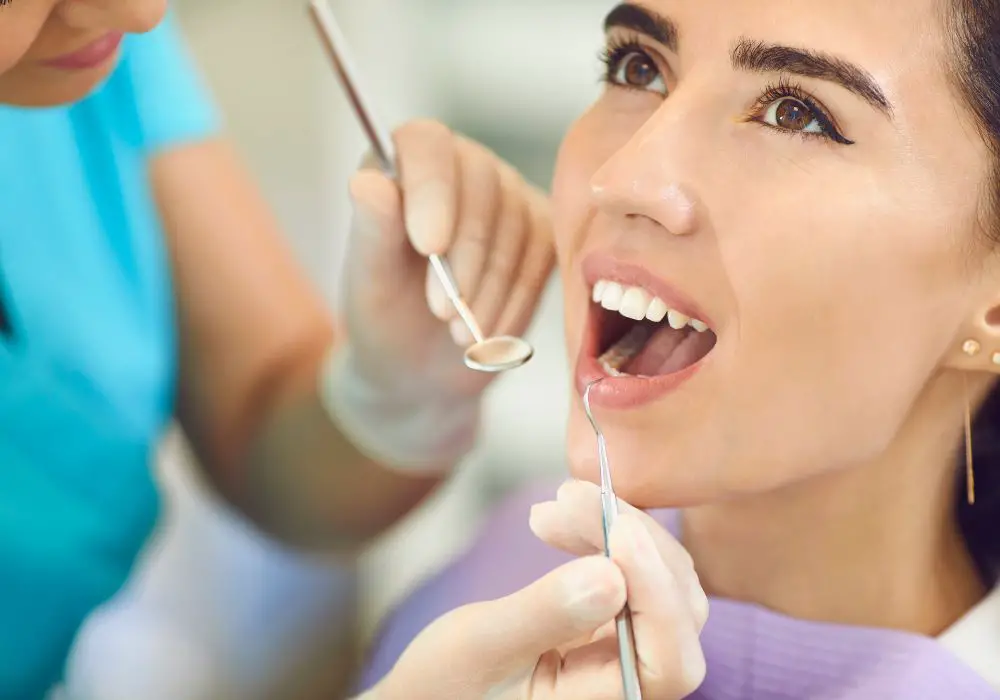
There are several approaches your dentist may use to manage an impacted canine:
1. Observation
If there are no symptoms and the tooth shows potential for erupting on its own, your dentist may opt to just monitor the situation for a while.
2. Exposure and orthodontic guidance
A minor oral surgery procedure can be done to uncover the impacted tooth. An orthodontist then attaches braces to guide the canine down into alignment. This has a good prognosis if done at the right developmental phase.
3. Surgical repositioning
Your oral surgeon may try to surgically reposition the canine into the proper position if there is enough space available.
4. Extraction
Removing the impacted canine may be necessary if it is unlikely to erupt properly. Your orthodontist can then close the space with braces. The extraction prevents long-term complications.
5. No treatment
If you are not having any problems and the tooth is positioned favorably, your dentist may recommend just monitoring the situation over time without treatment. However, problems can develop later.
Your dentist will discuss the various options to determine the best course of action for your unique case.
What does treatment involve for an impacted canine?
Treatment for an impacted canine is tailored for each patient, but may include:
- Dental imaging – X-rays, CT scans or MRIs to visualize the tooth position.
- Exposure surgery – A flap is created and bone is removed to access the impacted tooth.
- Bonding and traction – A bracket or attachment is bonded to the exposed tooth. An orthodontic chain or wire applies gentle pressure to guide it down.
- Progress monitoring – Your orthodontist will monitor the progress of the eruption at follow-up appointments.
- Reshaping – Once exposed, the canine may need some reshaping by the dentist for a proper fit.
- Retention – A fixed or removable appliance holds the repositioned tooth in place.
- Restorations – Fillings, veneers or crowns can improve appearance of discolored or misshapen teeth.
Proper oral hygiene is essential throughout treatment to prevent infections while teeth move. Your orthodontist and dentist will work together to bring the canine into its optimal position.
What is the best age to treat an impacted canine?
It’s ideal to catch canine impaction early, around ages 10-13, while the jaw is still developing and teeth are erupting. There are better outcomes if treated at younger ages.
The chances of guiding an impacted tooth into place decrease after the root fully forms around age 15. However, surgery to uncover and bond the tooth can still succeed into the late teens, depending on the tooth position and space available.
Beyond teenage years, treatment becomes more complex. Impacted canines that are ankylosed in bone or extensively displaced can’t be guided into place. The chosen treatment typically shifts from exposure to extraction or monitoring.
Can an impacted canine still erupt in adults?
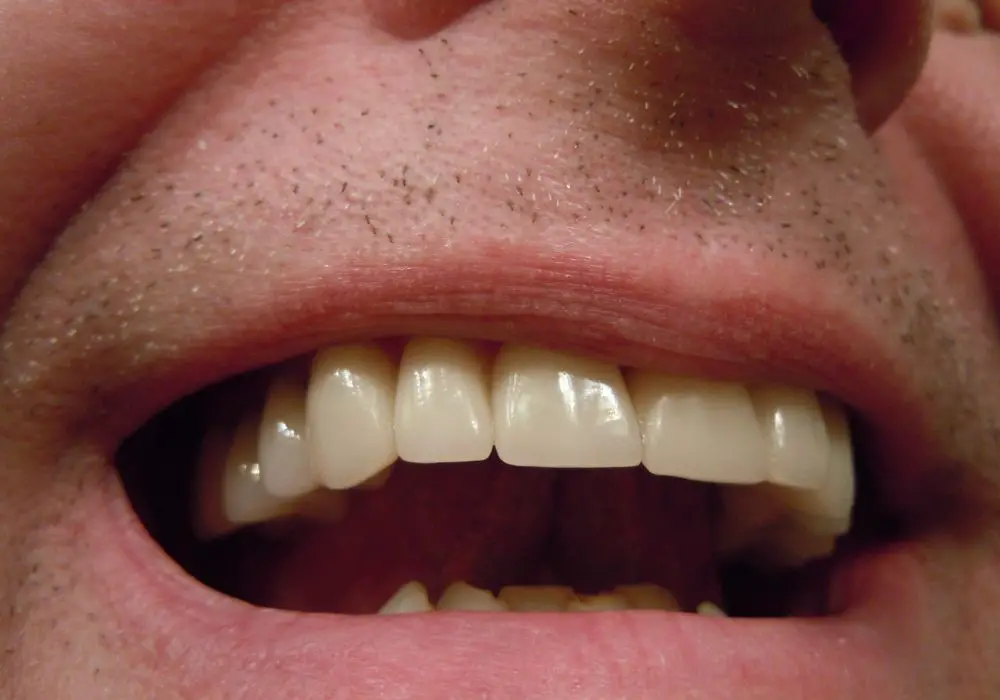
Spontaneous eruption of an impacted canine can occasionally occur in adults, but the prognosis declines significantly after adolescence. After skeletal maturity, there is little potential for the bony canine socket to reform and facilitate eruption.
However, surgical exposure and orthodontic traction can still potentially bring an impacted canine into alignment up to age 25 or so. Beyond this age, surgical repositioning or extraction become the only options. Since ankylosis and complications increase with time, delayed treatment usually has poorer outcomes.
Does tooth extraction cause bone loss in the jaw?
Extracting any tooth, including canines, leads to some degree of bone loss where the tooth socket was. This occurs because stimulation from the tooth root helps maintain the bone. After extraction, resorption of the alveolar bone begins.
There is wide variation in how much resorption occurs after extractions. In general, bone loss is minimized if teeth are removed at a young age before becoming fully embedded in mature bone. Bone grafting into extraction sites also limits resorption.
The lower jaw tends to maintain more bone density compared to the upper after extractions. Larger teeth like molars and canines leave wider sockets that lose bone volume more quickly. Dentures usually accelerate bone loss, while dental implants can preserve bone at the site.
Proper orthodontic closure of an extracted canine space can minimize bone loss. But some vertical and horizontal shrinkage of the alveolar ridge is unavoidable after extraction, regardless of age. The intact teeth also recede slightly into the unsupported space.
What happens if an impacted canine is left untreated?
Leaving an impacted canine untreated increases the likelihood of certain complications and reduces effectiveness of delayed treatment. Possible outcomes of neglecting impaction include:
- Increased tooth displacement and difficulty erupting if left past adolescence
- Cyst or tumor formation around impacted tooth
- Loss of adjacent teeth over time due to root resorption
- Infection or abscess of impacted tooth damaging other teeth
- Shifting teeth and poor bite due to missing canine space
- Need for complex surgical extraction later in life
- Eventual premature tooth loss if left impacted long-term
While impacted canines may cause no issues for some time, most experts recommend early evaluation and monitoring at the very least. Addressing impaction in a timely manner provides better outcomes.
Frequently Asked Questions
What is the success rate for bringing down an impacted canine with orthodontics?
The success rate is around 70-90% if treated early while the root is still developing and the jaw is malleable. After teenage years, success rates fall to 50% or less.
How long does it take to bring down an impacted tooth into place?
The orthodontic process typically takes 12-18 months on average but can range from 6 months to several years depending on severity. The total treatment time includes surgery, orthodontics, restorations, and retention.
Is it better to expose the tooth and attach a brace or extract it?
Attempting to bring an impacted canine into place is preferable if caught early enough. But if the tooth is extensively displaced or unlikely to erupt properly, extraction may be better to avoid complications.
Do I need braces if I have an impacted canine?
Fixed orthodontic braces are usually required to create space and apply controlled force to guide the impacted tooth into alignment. But in some cases Invisalign or clear aligner therapy may work instead.
How much does treatment for an impacted canine tooth cost with insurance?
Treatment costs vary based on method and individual factors. With insurance coverage, your out-of-pocket costs may range from $1000 – $4000 on average, including orthodontics.


